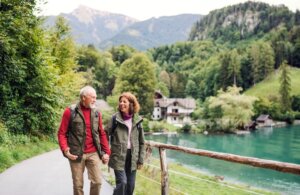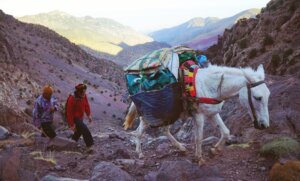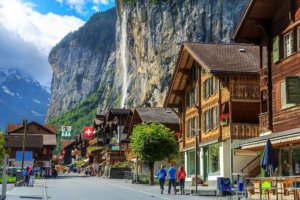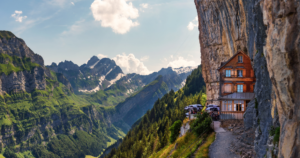
Preparing for a multi-day trek in the mountains goes beyond just putting on your boots and daypack and setting off. At Ryder-Walker we’re here to guide you every step of the way, ensuring your entire journey, from initial training to your first hike on vacation, is both enjoyable and rewarding. Whether you’re building stamina or choosing the right gear, these practical tips will have you trail-ready for your upcoming guided or self-guided adventure.
Training Tips to Get You Trail Ready
1. Start with Consistent Walks: Begin with regular walks around your neighborhood and on local trails. Gradually increase your distance and pace to build stamina.
- Why it matters: This builds a base level of cardiovascular fitness and gets your joints and muscles used to prolonged movement. It will be especially helpful for long days on rugged alpine trails (like some of our favorites in the Alps).
- Pro tip: Add in varied terrain like gravel, grass, and uneven sidewalks to mimic the natural conditions you’ll encounter when hiking. If possible, hike on rocky or root-filled trails to train your balance and coordination.
- Add-on idea: End your walk with 5 to 10 minutes of light stretching to keep muscles limber.
2. Incorporate Strength Training: Strengthen your core, legs, and back with exercises like squats, lunges, and planks. This will help you handle varied terrain with ease.
- Why it matters: Steep ascents, rocky descents, and long traverses require a strong lower body and stable core. Strength work helps prevent fatigue and protects your joints. Aim to strength train 2–3 times per week.
- Suggested exercises:
- Step-ups: Great for mimicking uphill motion.
- Glute bridges: Help with stability on uneven terrain.
- Plank rows or side planks: Build a strong core to support your pack and improve posture on trail.
- Get more tips for training for a multi-day hiking trip here.

3. Practice Hiking with Your Daypack: Begin hiking with a light load and slowly increase the weight as you become more comfortable. Your pack should weigh no more than 15 pounds and will hold water, snacks/picnic, first aid kit for self-guided treks, extra layers, sun protection, hat, gloves, rain gear. For hut overnights with no luggage the pack will weigh more with the few extras you will need. Check out our daily essentials packing list here.
- Why it matters: Training with your actual pack helps your body adapt to the added weight, especially on steep or technical terrain.
- Tip: Adjust your pack for proper fit each time—tighten the hip belt, loosen shoulder straps slightly, and check that the weight is close to your body’s center of gravity.
- Exercise pairing: Try stair climbing or hill repeats with your pack on.
4. Practice Ascents and Descents: Incorporate stairs or hills into your training to simulate the inclines and declines you’ll encounter on the trail.
- Why it matters: Ascents build aerobic endurance and leg strength, while descents challenge your quads, knees, and joints—especially important on alpine treks with steep, rocky trails. Stability and balance are also critical for safely navigating narrow paths, switchbacks, and stream crossings.
- Training ideas:
- Use hiking poles on steep descents to reduce joint impact and improve stability.
- Box step-downs: Slowly step down from a bench or box to build control and lower-body strength.
- Single-leg stands or balance drills: Improve coordination and joint stability for tricky terrain.
- Trail simulation: Walk on curbs, rocks, or uneven park paths to mimic real trail conditions.
- Pro tip: Go slow and focus on form when going downhill. Proper technique is often more important than speed and will help prevent injury.

5. Focus on Flexibility: Incorporate stretching into your routine to improve your flexibility and reduce the risk of injury.
- Why it matters: Hiking for multiple days can leave you tight and sore, especially in your hips, hamstrings, and calves. Flexibility keeps your stride fluid and your body feeling good.
- Key stretches:
- Hip flexor stretch (kneeling lunge)
- Standing hamstring stretch
- Calf stretch on a stair or wall
- Bonus: Add yoga once or twice a week for overall mobility and balance. Check out these six simple yoga postures to help keep you injury-free on the trail.
6. Stay Hydrated and Nourished: Proper hydration and nutrition are vital. Drink plenty of water and eat balanced meals to fuel your body for the trails. While training, bring healthy snacks to simulate the snacks you will bring on the trail. Most countries sell energy bars like those found in the USA.
- Why it matters: Even moderate dehydration can lead to fatigue and poor performance, especially at altitude or in hot weather.
- Trail snack ideas:
- Mixed nuts, dried fruit, meats and cheeses (easy to find for all of our European treks!)
- Local energy or snack bars
- Hydration tip: During training hikes, practice drinking regularly—don’t wait until you’re thirsty.
7. Listen to Your Body: Pay attention to how your body feels. Rest when needed and don’t push beyond your limits.
- Why it matters: Overtraining before a trek can lead to injury or burnout. Rest is just as important as training when preparing for long days on trail.
- Smart strategies:
- Take one full rest day per week.
- Include gentle movement (like walking or stretching) on recovery days.
- Monitor your energy, sleep, and mood for signs of overtraining.
- Remember: If your goal is to enjoy your trek, not just survive it, pacing and rest are your allies.

8. Break in Your Hiking Boots (and Socks!): New boots or shoes can cause blisters and discomfort if not properly broken in before your trip. We recommend spending time wearing your shoes so that when you hit the trial, your feet are primed. Get our full guide to footwear here: Choosing the right gear and footwear.
- Why it matters: On multi-day treks, especially rugged alpine routes, foot issues can derail the whole experience. Even on easier trails, comfort is key.
- What to do:
- Wear your boots on training hikes and around the house to soften them up.
- Use the same socks you plan to hike in, preferably wool or synthetic blends that wick moisture.
- Test your boots on inclines and uneven terrain to ensure they support your ankles and don’t cause hot spots.
- Smart Strategies: Pack a blister kit!
9. Extra Credit! Train Your Mind & Lungs, Too: Trekking is as much a mental challenge as it is a physical one. Visualize yourself completing long days on the trail, especially if the terrain, or weather, gets tough. Set realistic expectations and celebrate milestones during training and your trek. Building mental endurance now can help you stay positive and motivated, even when the weather shifts or your legs are tired. If your trek includes higher elevations than your body is used to, be aware that altitude can affect hydration, energy levels, and breathing. Stay well hydrated, train with incline where possible, and give yourself a few days to adjust if you’ll be arriving from sea level when possible.
By incorporating these suggestions into your pre-trek training, we hope you’ll feel well prepared for the trails ahead—whether you’re joining us for a more challenging trekking adventure or a gentler self-guided inn-to-inn walk. Every step you take now builds the foundation for an incredible journey. For even more tips on training visit our blog: Fitness and Training: Get in Shape for Your Hiking Tour.





















Comments are closed.